While colonialism and slavery flourished in the 18th century, the foundations of modern democracy were also being established. It is important to consider the ideas of liberty, equality, fraternity and individual freedom in the late 18th century, and to understand what these meant in societies of the time. The conditions in France that caused the revolution in 1789 should be put into context regarding why revolutions did not occur in a reforming monarchy such as the United Kingdom, or in Russia.[1]
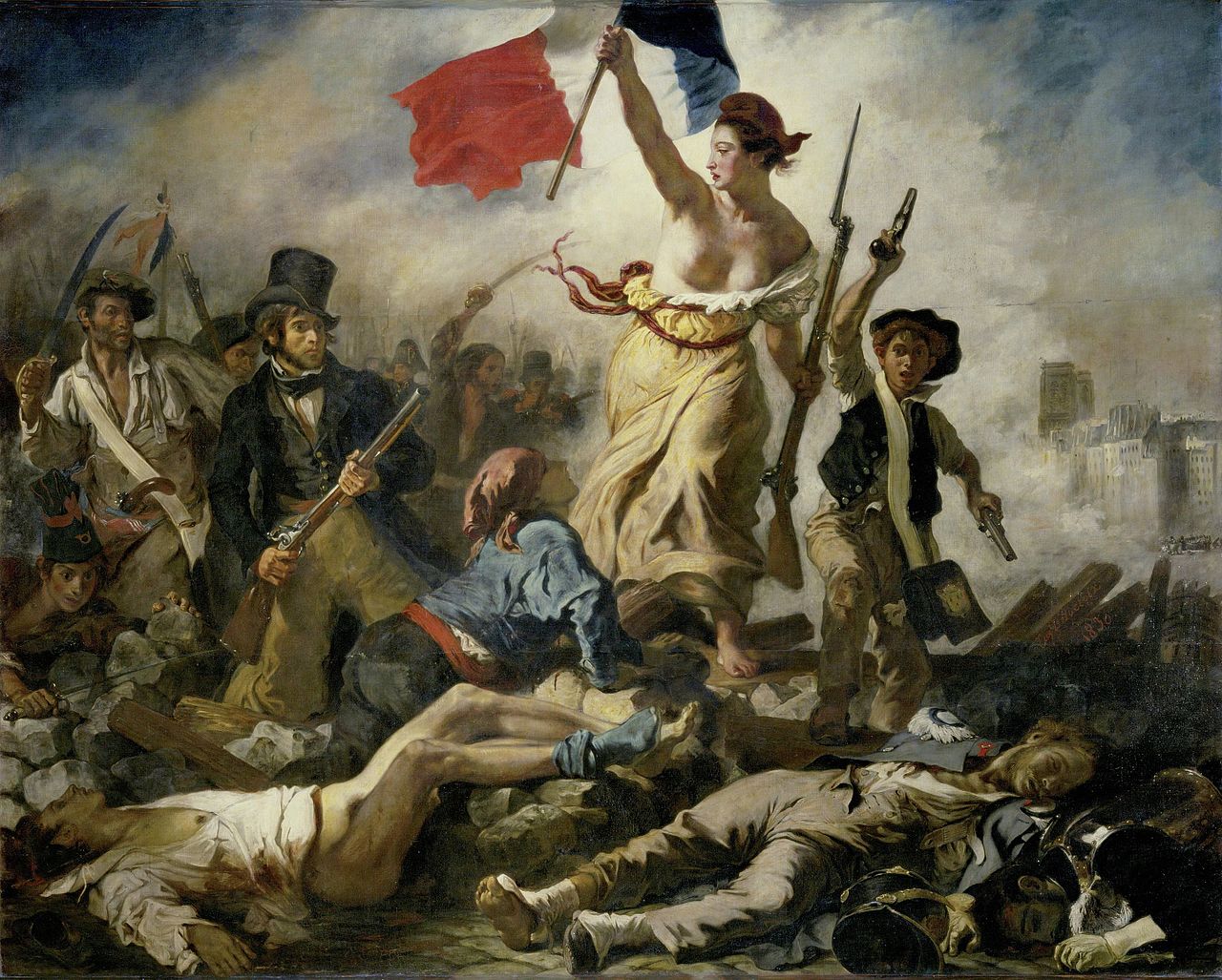 Eugène Delacroix, “Commemoration of the French Revolution”, Enrich Lessing Culture and Fine Arts Archives. (Accessed 25 May 2020) Image Source
Eugène Delacroix, “Commemoration of the French Revolution”, Enrich Lessing Culture and Fine Arts Archives. (Accessed 25 May 2020) Image Source
Source: Eugène Delacroix, “Commemoration of the French Revolution”, Enrich Lessing Culture and Fine Arts Archives. (Accessed 25 May 2020), Available at:
Major events in the French Revolution
TIP: For full essays on the causes and legacy of the French revolution, see Topic 3: Example Essay Questions.
TIP: See additional SAHO article on European Revolutions 1750 to 1850.
Pre-Revolution
Louis XVI and Marie Antoinette
The palace of Versailles was built on the château, a rural location of a luxurious residence, of Louis XII.[2] Louis XIV established his royal court and government at the palace in 1682. [3] Power was retained in the palace until the reign of Louis XVI. The beginnings of revolution in France forced Louis XVI and his wife, Marie Antoinette, out of the palace.
TIP: For a virtual tour of the palace, click here.
The Period of Reform (1781-1789)
Tennis Court Oath and the National Constituent Assembly
Louis XVI attempted to bring economic reform to France in 1788. Jacques Necker was a key role player in Frances economic status. Having previously financed French troops in the American war of independence, Necker had caused an accumulation of public debt.[4] When Necker was recalled to office by King Louis XVI, there was the decision to consult the Estates General in order to handle France’s economic status. The Estates General was a parliament that was composed of clergy, nobility and commoners. Up until this point, the Estates General had not convened in 175 years.[5]
The Estates General convened at the Palace of Versailles in the May of 1789. In this meeting, the third estate advocated for voting rights.[6] The first two estates refused to grant them with these rights. As a result, the third estate broke away and decided to form the National Assembly. They sought support from sympathetic nobles and clergymen. On the 20th of June, members of the National Assembly were locked out of Versailles.[7] Instead of convening in the palace, they chose to meet in a nearby tennis court. Here they swore “to remain until a constitution is established”.[8] This oath became known as the Tennis Court Oath.
Between the 17th of June and 19th of July , 1789, the National Constituent Assembly was formed in France.[9] This was arguably a milestone in France’s path towards a revolution. Jacques Necker, France’s finance minister, was a strong advocate for the merging of the estates. The formation of the National Assembly allowed the three estates to vote together. The privileged estates fiercely opposed Necker. Subsequently, King Louis XIV fired Necker on the 11th of July. The reason for this being Necker’s sympathies with France’s Third Estate.[10] This dismissal had an immediate impact on France, and contributed to riots. It also played a role in triggering the Storming of the Bastille.
Storming of the Bastille
Riots took place in France between the 7th and 14th of July, 1789.[11] The King had ordered a concentration of troops to be stationed around Paris. In addition to this, rumours about a potential ‘royal clampdown’ were sparked. The rioting ended with the capture of the Bastille prison on the 14th of July 1789. [12]
The Bastille prison was the place in which high-ranking state prisoners were held. This prison was guarded by 18 canons, 12 artillery pieces, 32 grenadiers and 82 veteran soldiers. [13] On the 14th of July, rumours had spread that troops would be marching through Paris to end the rioting. In response to the rumour, an estimated 600 to 1000 people assembled with weapons that had been seized from the Hôtel des Invalides. [14] The crowd then gathered in front of the Bastille to collect military equipment to defend against the troops. After unsuccessful delegations on the part of Bernard-René de Launay, the governor of the Bastille, the crowd forced their way into the undefended outer courtyard. [15]
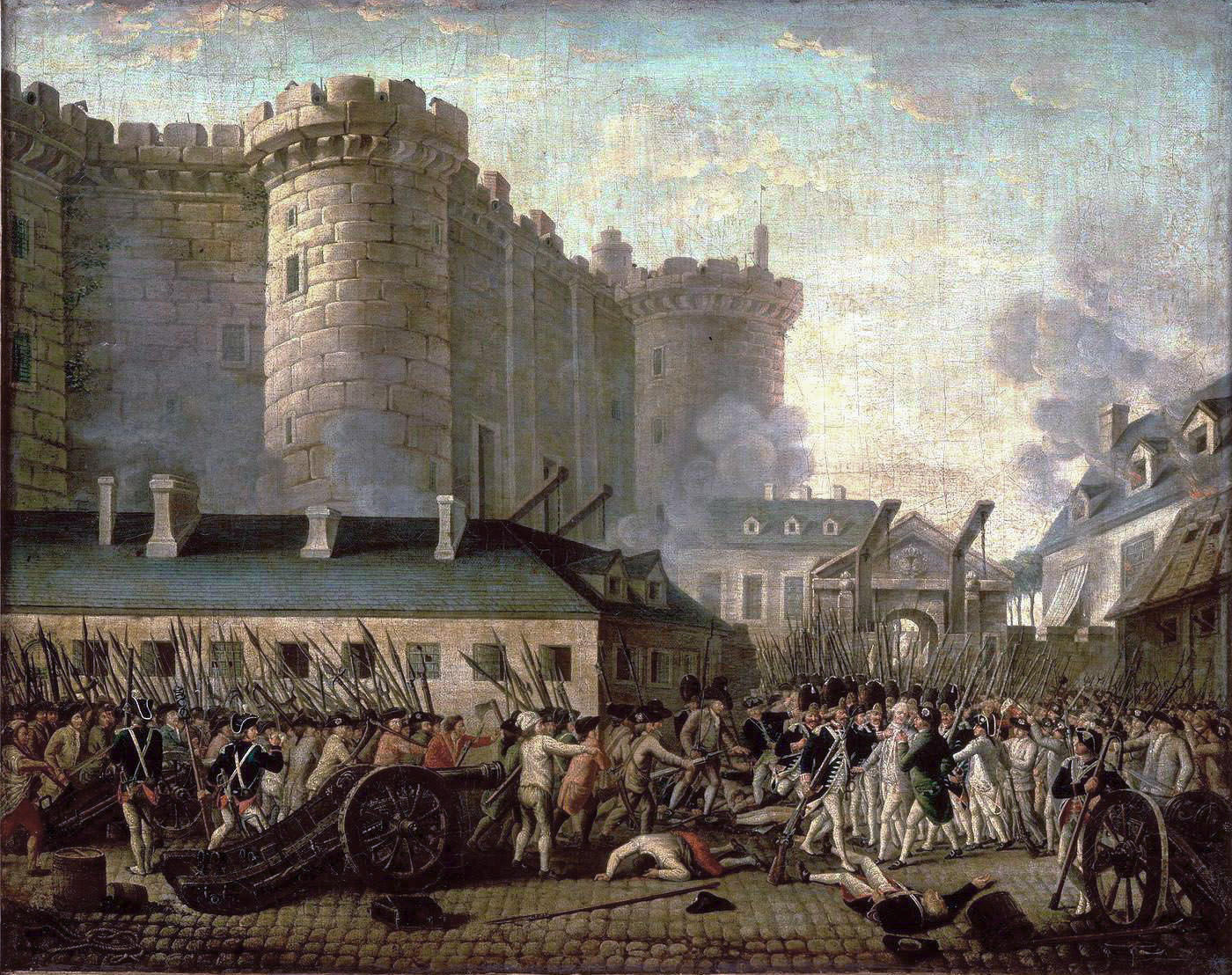 Bernard-René de Launay, surrounded by soldiers during the Storming of the Bastille. He was subsequently seized by the crowd and decapitated Image Source
Bernard-René de Launay, surrounded by soldiers during the Storming of the Bastille. He was subsequently seized by the crowd and decapitated Image Source
The mob ended up storming the prison. Word spread quickly about the fall of the Bastille, and prompted further uprisings across France. [16] This event supposedly symbolised the overthrowing of royal tyranny. The Storming of the Bastille forced King Louis XVI to accept the National Assembly. [17] On the 4th of August the National Assembly deputies voted against Feudal privileges (hyperlink to topic 1). [18]. The National Assembly was instrumental in passing a series of reforms, one of which included the ‘Declaration of the Rights of Man’ [19].
This phase saw the undoing of the Feudal system in France. Church land was sold off, and members of clergy were forced to make civic oaths to the state. This act would, in fact, later lead to the counter-revolution. [20] During this time, political clubs like the Cordeliers and Jacobins attempted to control the National Assembly. The Jacobins were a ‘political party’ that had control throughout France. [21] On the 12th of June, 1791, The King attempted to flee Versailles, but was captured in Varennes. After this event, the people of France lost their faith in the King.
The period of violent change (1792-1794)
The Jacobins, the National Convention and the Committee for Public Safety
In the April of 1792, France declared war on Austria and Prussia. France then suffered from a series of military defeats, and panic spread across the country. On or around the 10th of August, Parisian radicals stormed the Tuileries. [22] Tension grew in France, and while the Tuileries was stormed, a revolutionary Commune initiated the massacre of 1200 ‘counter-revolutionaries’. On the 20th of September, a radical Assembly known as the National Convention was elected. [23] Following this, France was declared a republic.
On the 21st of January 1793, King Louis XVI was sentenced to death by guillotine. France was weak to foreign invasion. Internally, France faced the challenge of maintaining peace. They enforced conscription on citizens. A counter-revolution, in this case a civil war, broke out for three days. It was ended when a Revolutionary Tribunal was established on the 10th of March, 1793. [24] The aim of the tribunal was to provide instant justice and the Committee for Public Safety (CPS). Although the CPS had been established, the National Convention experienced conflict as a result of conflicting factions. The Girondins were expelled from the National Convention on the 2nd of June. Evidently, this gave rise to the power of the Jacobins. [25]
The Jacobins, Robespierre and the Reign of Terror
Maximilien Robespierre took over leadership of the Jacobins and aimed to create a new republic in France, one that upheld ‘virtue’ and ‘citizenship’. This period saw a change in many systems, including the French calendar and naming of towns. [26] The Reign of Terror began on the 5th of September 1793, when an official war was declared on those who held counter-revolutionary alliances or sympathies. [27] Terror across France spread, and instant justice took precedence. In 10 months, as many as 20 000 citizens were executed for being ‘enemies of the revolution’. [28] On the 27th of July, 1793, Robespierre and the Jacobin leaders were overthrown and sent to the guillotine. Following this, the ‘white terror’ resulted in an anti-Jacobin backlash.
End of the revolution (1795-1799)
Napoleon Bonaparte
Napoleon Bonaparte defeated the remaining royalists on the 5th of October 1795. On the 3rd of November, the Committee for Public Safety (CPS) was replaced with a five-man Directory. [29] Following this, there were two attempted elections, but they were both annulled due to royalist/radical divisions. [30] By 1799, Napoleon led a coup d'état against the five-man Directory. Within five years, Napoleon Bonaparte became Emperor of France.
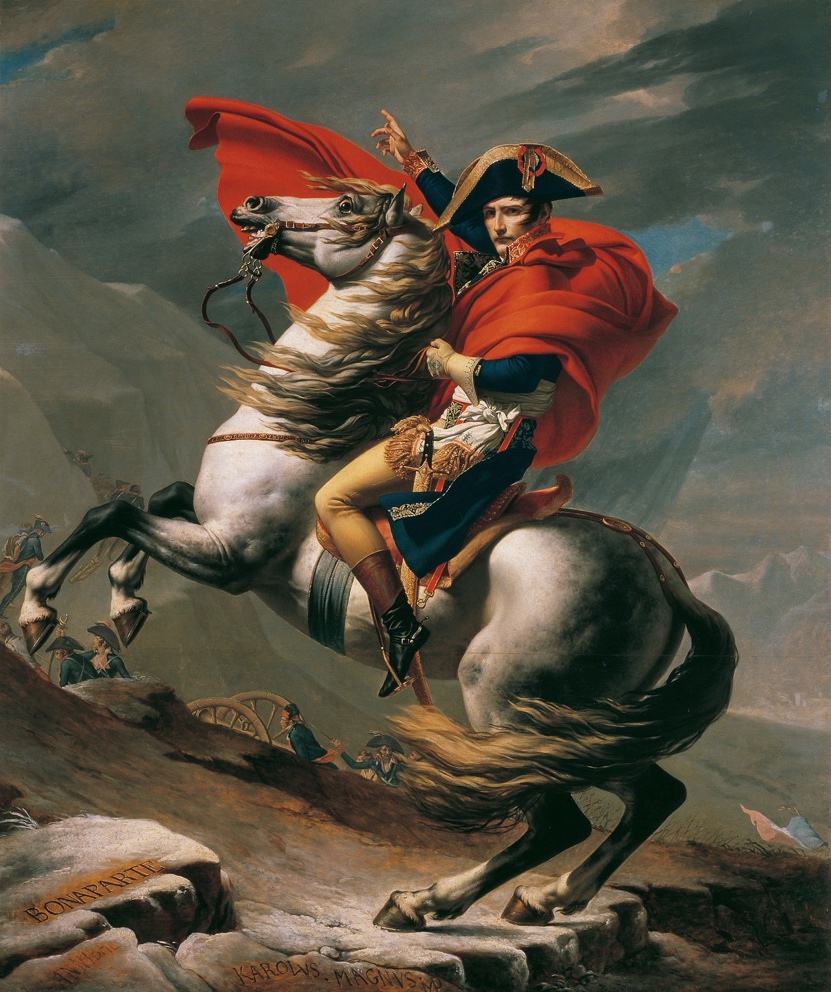 Napoleon Bonaparte, 1800. Image Source
Napoleon Bonaparte, 1800. Image Source
The Role Ordinary People and Women in the Revolution
Ordinary people were at the forefront of the revolution. The Storming of the Bastille was led by ordinary people, and soon after, peasants in France became politically active. [31] Middle class individuals began to take over the running of their local towns. One could argue that when the National Assembly relocated to Paris, the number of ordinary people in attendance grew. [32] By the time the Reign of Terror came around, many people joined the revolutionary armies. All of this resulted in a significant change in their status, they were no longer seen as subjects of the king, but rather citizens with rights. With that being said, many peasants did not support the Reign of Terror. A lot of workers and peasants were executed during the Reign of Terror.
Women played a very important role in the revolution. They were instrumental in leading a bread march to Versailles on the 5th of October 1789. [33] Women had to provide for their families, and were affected by the overpriced food. Middle class women did not appreciate the aristocracy’s overspending. Middle class women also wanted to gain political favour. Evidence suggests that Olympe de Gouges was instrumental in creating the ‘Declaration of the Rights of Women and the Female citizen in 1791. Some historians believe that the French revolution was the beginning of the fight for women’s equality in Europe. [34] Another influential woman was Manon Roland. She was married to a revolutionary leader and vocalised the need for gender equality. She was later imprisoned and executed. [35]
By the end of the revolution, the estate system had come to an end. This did not result in immediate changes for the French working class. [36] Many of the class structures remained the same. Further effects of these class structures were seen in the subsequent Haitian revolution. See the Essay on the legacy of the French revolution.
French Revolution Timeline[37]
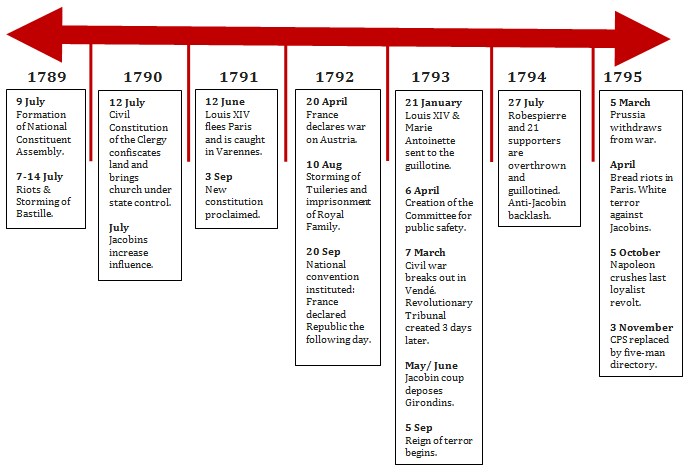
Chronological order of French Governments (1789-1794)
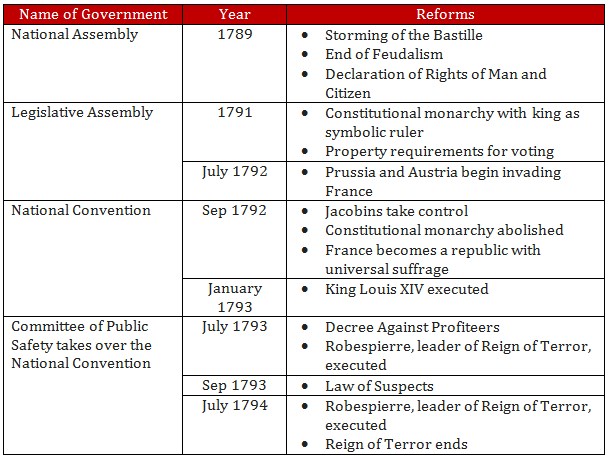
This content was originally produced for the SAHO classroom by
Ilse Brookes, Amber Fox-Martin & Simone van der Colff
[1] Department of Basic Education: History National Curriculum Statement FET and Training Phase Grades 10-12. https://www.sahistory.org.za/archive/caps-grades-10-12-history. (25 May 2020).
[2] Château de Versailles. http://en.chateauversailles.fr/discover/estate/palace. (06 June 2020)
[3] Ibid.
[4] Biography Your Dictionary: Jacques Necker. https://biography.yourdictionary.com/jacques-necker. (06 June 2020)
[5] A. Hart-Davis (ed.): History The Definitive Visual Guide from the Dawn of Civilisation to the Present Day. p. 302.
[6] Ibid.
[7] Ibid.
[8] Ibid.
[9] Ibid.
[10] Biography Your Dictionary: Jacques Necker. https://biography.yourdictionary.com/jacques-necker. (06 June 2020)
[11] A. Hart-Davis (ed.): History The Definitive Visual Guide from the Dawn of Civilisation to the Present Day. p. 302.
[12] Ibid.
[13] Ibid. p. 300.
[14] Ibid.
[15] Ibid.
[16] Ibid.
[17] Biography Your Dictionary: Jacques Necker. https://biography.yourdictionary.com/jacques-necker. (06 June 2020)
[18] A. Hart-Davis (ed.): History The Definitive Visual Guide from the Dawn of Civilisation to the Present Day. p. 302.
[19] N. Worden, J. Bottaro, P. Visser, P. “In Search of History: Grade 10 Learner’s Book”.
[20] A. Hart-Davis (ed.): History The Definitive Visual Guide from the Dawn of Civilisation to the Present Day. p. 302.
[21] Ibid.
[22] Ibid. p. 303.
[23] Ibid.
[24] Ibid.
[25] Ibid.
[26] Ibid.
[27] Ibid.
[28] Ibid.
[29] Ibid.
[30] Ibid.
[31] N. Worden, J. Bottaro, P. Visser, P. “In Search of History: Grade 10 Learner’s Book”.
[32] Ibid.
[33] A. Hart-Davis (ed.): History The Definitive Visual Guide from the Dawn of Civilisation to the Present Day. p. 302.
[34] N. Worden, J. Bottaro, P. Visser, P. “In Search of History: Grade 10 Learner’s Book”.
[35] Ibid.
[36] Ibid.
[37] A. Hart-Davis (ed.): History The Definitive Visual Guide from the Dawn of Civilisation to the Present Day. p. 303.